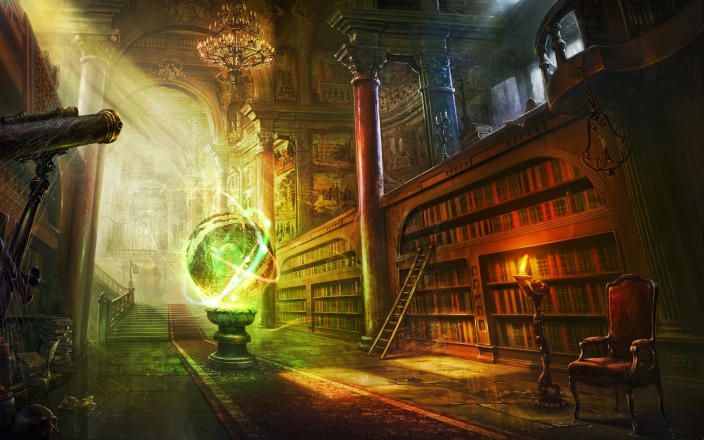Artwork-driven adventure design
Published on
There is widespread sentiment in the creative community that a great work of art must come from the artist’s own imagination. While homages and allusions to other art are accepted and often appreciated, blatant plagiarism is universally rejected.
The world of roleplaying games, even though it’s a highly creative field, differs from other art in two important ways: its primary goal is entertainment, and the audience of a single adventure generally only consists of a single gaming group. These facts provide roleplayers with an immense benefit: Plagiarism is no problem at all, as long as it enhances the game.
This is not a new sentiment; in fact, it’s spelled out clearly in the world’s most iconic roleplaying game, Dungeons & Dragons: The DM’s job is to entertain, not to be original.
For those who enhance their sessions with music and visuals, it opens up an entirely new world of possibilities. One such possibility is what I call artwork-driven adventure design.
To put it simply, artwork-driven adventure design means creating an adventure based on artwork that you have already found, rather than trying to find suitable artwork for an adventure that you have already created. In other words, you conjure up an entire adventure based on inspiring pictures and music tracks. Since the adventure is based on the artwork, they will mesh perfectly and appear as if they were made for each other.
For instance, let’s say that you find this digital painting of a wizard’s library by Shuxing Li:

If you are looking for artwork to depict a generic library, this is far too specific. Similarly, if you have already created an adventure centered around a wizard’s library, the details in this painting probably don’t match what you have come up with on your own. If you let the artwork shape your adventure, however, it easily becomes a perfect match.
Even after you have “stolen” the painting and incorporated it into your adventure, you’ll find that it immediately asks for new ideas in return. What is that sphere in the middle of the hallway? Why are there cobwebs all over the place and a skull on the floor? Where does the stairway lead?
When you answer these questions, you are letting the artwork drive your adventure design. If you do it right, the story will be just as captivating as anything else you create—but the players will now also marvel at sound and visuals that perfectly match the story that you are telling.
If you have comments on this post, send them in and they might be featured on the blog.